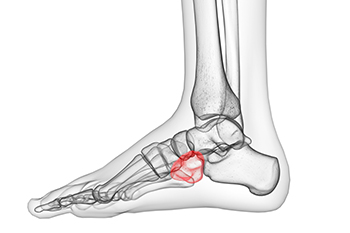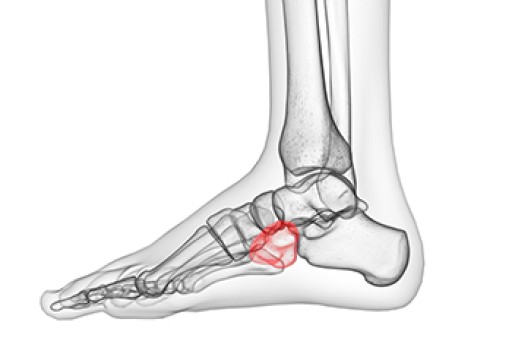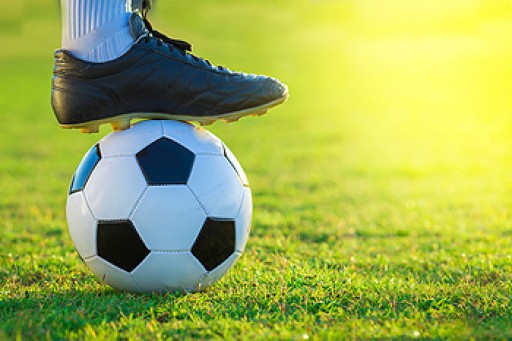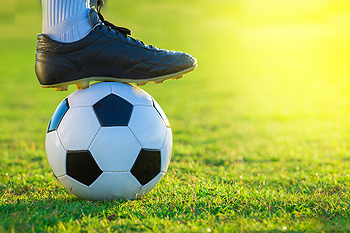 The cuboid is a bone located in the midfoot region, along the outside edge of the foot. Injury to this bone can cause plenty of midfoot pain. The pain may be sharp and is usually felt along the outside of the foot, near the pinky toe. The pain may worsen with physical activity or when putting weight on the foot, and gets better with rest. Sometimes, the range of motion of your foot will also be affected. Additionally, you may notice redness, swelling, and tenderness. Cuboid syndrome can be diagnosed through a physical examination. Imaging studies such as X-rays may be ordered to rule out a fracture. If you are experiencing any foot pain, please seek the care of a podiatrist.
The cuboid is a bone located in the midfoot region, along the outside edge of the foot. Injury to this bone can cause plenty of midfoot pain. The pain may be sharp and is usually felt along the outside of the foot, near the pinky toe. The pain may worsen with physical activity or when putting weight on the foot, and gets better with rest. Sometimes, the range of motion of your foot will also be affected. Additionally, you may notice redness, swelling, and tenderness. Cuboid syndrome can be diagnosed through a physical examination. Imaging studies such as X-rays may be ordered to rule out a fracture. If you are experiencing any foot pain, please seek the care of a podiatrist.
Cuboid syndrome, also known as cuboid subluxation, occurs when the joints and ligaments near the cuboid bone in the foot become torn. If you have cuboid syndrome, consult with Cary Golub, DPM from New York. Our doctor will assess your condition and provide you with quality foot and ankle treatment.
Cuboid syndrome is a common cause of lateral foot pain, which is pain on the outside of the foot. The condition may happen suddenly due to an ankle sprain, or it may develop slowly overtime from repetitive tension through the bone and surrounding structures.
Causes
The most common causes of cuboid syndrome include:
- Injury – The most common cause of this ailment is an ankle sprain.
- Repetitive Strain – Tension placed through the peroneus longus muscle from repetitive activities such as jumping and running may cause excessive traction on the bone causing it to sublux.
- Altered Foot Biomechanics – Most people suffering from cuboid subluxation have flat feet.
Symptoms
A common symptom of cuboid syndrome is pain along the outside of the foot which can be felt in the ankle and toes. This pain may create walking difficulties and may cause those with the condition to walk with a limp.
Diagnosis
Diagnosis of cuboid syndrome is often difficult, and it is often misdiagnosed. X-rays, MRIs and CT scans often fail to properly show the cuboid subluxation. Although there isn’t a specific test used to diagnose cuboid syndrome, your podiatrist will usually check if pain is felt while pressing firmly on the cuboid bone of your foot.
Treatment
Just as the range of causes varies widely, so do treatments. Some more common treatments are ice therapy, rest, exercise, taping, and orthotics.
If you have any questions, please feel free to contact our offices located in Williston Park, and Long Beach, NY . We offer the newest diagnostic and treatment technologies for all your foot care needs.











